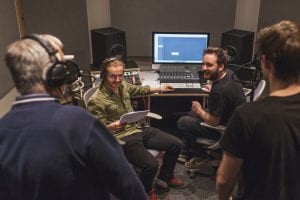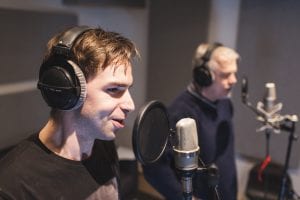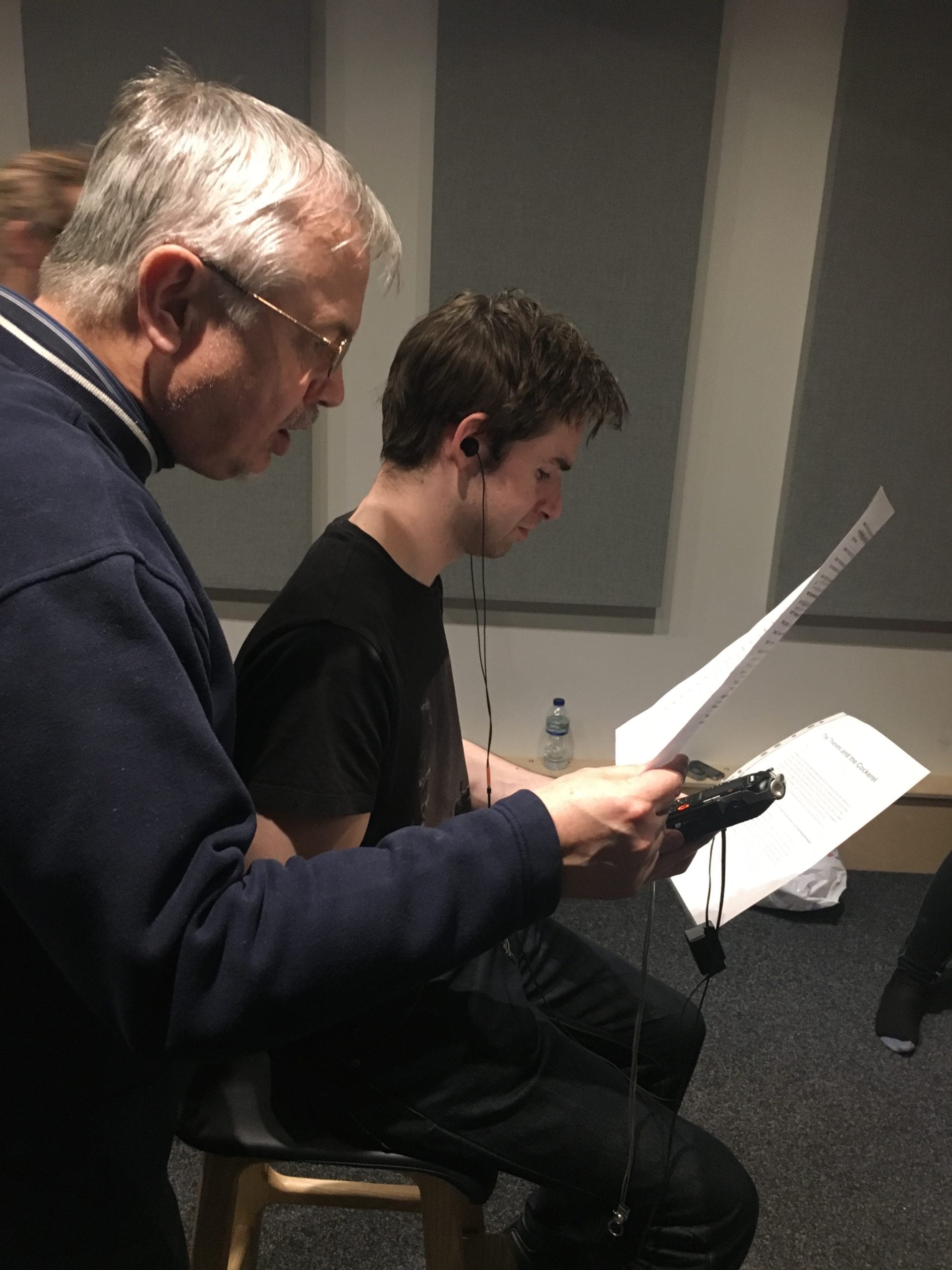This post is to cover the 4h session that we spent recording voice actors for our 3 audiobooks. This is the foundation of the stories and is one of our first steps in the creation.
Through previous projects that I had worked on, as well as through friends of friends I was able to find 5 willing actors to play various parts in our stories for us: Nigel Streeter, Siphosethu Ntsekwa, Steve Gale, Lucas Eisele, and Molly Robinson. They came in to DBS studios in Bristol (Where my project partner Rich works) so we could lay down the parts.
I had already adapted the stories into scripts and had sent them out to the actors. Then much like a radio play recording session we organised for different actors to come in at different times to cover all the scenes.
So we come to our first spatial related question. How do we record the narrators and voice actors? The characters will need to be positioned in the sonic space of the story to match the sound effects and the story actions. For example If in the story we have Peter shouting “WOOOOLF” from his tree, then we either need to have the voice of peter high above the point of view (POV) of the listener, or we will need to take the world from Peter’s point of view, with sheep bleeting down below.
You see that already we are needing to go deep into the positioning aspects of sounds before we have even recorded the dialog or drawn up a list of effects. This leads to what is probably the most limiting factor of binaural recording; that once you record a sound in a specific position, there is no way to alter or adjust this position.
It is true that everything could be planned before the session; every single scene, every little sound effect imagined and placed in its proper space. However this simply isn’t practical for us and would inevitably lead to redos. So often you discover and sound you previously didn’t think was important is missing, or a sound you have made room for just isn’t working. This work is very much a building project and always leads to scrapping and editing at some point or another.
With all of the above, we decided that majority of the dialog would be recorded in straight mono. We would then be able to use binaural emulation to shift the sounds virtually at a later point. Why not use this all the time? The trade-off is that the spatial quality of emulation is no match for the real-microphone-recorded-deal. Sounds will often fell lost in the space, especially in the Y-axis and Z-axis and the effect is lost. However we found that the audio signal of the dialog was strong enough that it carried through and was one of the rare occasions where we saw emulation working well. Besides in most cases, character voices rest on the X plane.
The narrator, we decided should remain central to the story, omnipresent and non-directional, simply a voice in the sky. Simple.
We used two Neumanm microphones, which offered the greatest clarity with a little added warmth to the sound and matched well.

We recorded with the artists in the control room for simplicity
Working with actors is always a laugh and this was no exception. In particular, Lucas’ character improvisation gave us lots of little fun silly bits to add to the stories.
Once all the spoken bits were complete we moved on to what I labeled as the “vocal FX”. These can be very easy to forget, but say you’re following the actions of two thieves who are hopping a fence, its important that they grunt and pant their ways over. Its always surprising just how much of these sounds there are when you think about it.
Finally with what time we had left we moved on to a limited number of true binaural sounds, where the effect was too good to miss out on. For example, we wanted the effect of being in a crowd of villagers shouting and panting as they charged down and hill to scare away the wolf. Gathering everyone around the microphone wearer we were able to accomplish the effect nicely. Other effects to be done binaurally included anything close proximity, as when done right with binaural microphones, you can almost feel the breath on your neck.
Overall the session was a success. What followed was many hours of dialog editing, labeling and decision making. More on this to come.

